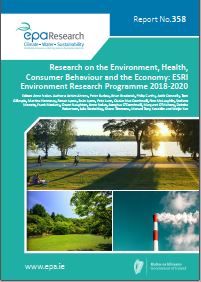
Authors: Achim Ahrens, Peter Barlow, Brian Broderick, Philip Carthy, Aoife Donnelly, Tom Gillespie, Martina Hennessy, Ronan Lyons, Seán Lyons, Pete Lunn, Ciarán Mac Domhnaill, Finn McLaughlin, Stefano Meneto, Frank Moriarty, Owen Naughton, Anne Nolan, Aonghus O´Domhnaill, Margaret O’Mahony, Deirdre Robertson, Iulia Siedschlag, Shane Timmons, Manuel Tong Koecklin and Weijie Yan. Editor: Anne Nolan, November 2020
Year: 2020
The EPA/ESRI Environment Research Programme brings together a diverse set of research topics with the objective of assessing the ways in which the environment interacts with economic and social processes. This report provides a detailed summary of the 12 topics examined in the second phase of the programme, which was carried out between 2018 and 2020.
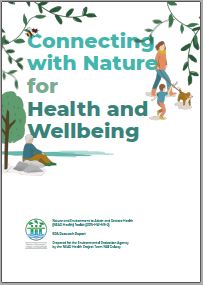
Authors: Caitríona Carlin, Gesche Kindermann, Easkey Britton, Martin Cormican, Christine Domegan, Mike Gormally and Diarmuid O’Donovan, October 2020
Year: 2020
This toolkit accompanies EPA Research Report 348: Nature and Environment to Attain and Restore Health (NEAR Health)
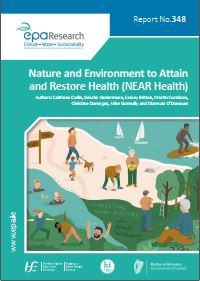
Authors: Caitríona Carlin, Gesche Kindermann, Easkey Britton, Martin Cormican, Christine Domegan, Mike Gormally and Diarmuid O’Donovan, October 2020
Year: 2020
The NEAR Health project was jointly funded by the EPA and the HSE to investigate how nature and environment can help society attain and restore health. It investigated (1) how people value and experience nature, health and wellbeing, (2) the barriers and bridges to connecting with nature, (3) what people want from their healthy future environment and (4) nature-based activities that benefit people’s health and wellbeing.
Year: 2020
Human health protection is a fundamental aspect of environmental protection. Our health is impacted by the air we breathe, the water we drink, the noise levels we experience, the food we eat, the spaces we spend time in, and our sense of wellbeing. This Brochure provides an overview and key findings of the three research projects jointly funded by the EPA and the HSE.
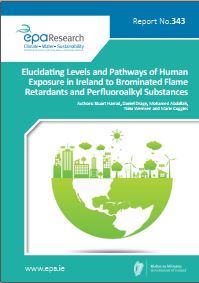
Authors: Stuart Harrad, Daniel Drage, Mohamed Abdallah, Nina Wemken and Marie Coggins, September 2020
Year: 2020
Brominated flame retardants (BFRs) and perfluoroalkyl substances (PFASs) have been used extensively in applications such as electrical goods, soft furnishings and building insulation foam. The ELEVATE project generated data to facilitate the assessment of human exposure to these chemicals.
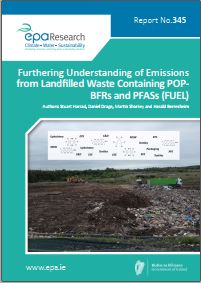
Authors: Stuart Harrad, Daniel Drage, Martin Sharkey and Harald Berresheim, September 2020
Year: 2020
Brominated flame retardants (BFRs) and perfluoroalkyl substances (PFASs) have been used extensively in applications such as electrical goods, soft furnishings and building insulation foam. The FUEL project measured these chemicals in leachate from landfills, and collected air, soil and groundwater samples traceable to these landfills to further investigate.
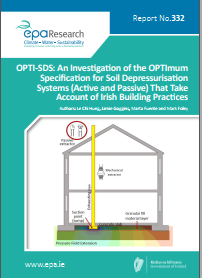
Authors: Le Chi Hung, Jamie Goggins, Marta Fuente and Mark Foley, July 2020
Year: 2020
In Ireland, Radon is the second biggest cause of lung cancer and it is estimated that 9% of homes exceed the reference level of Radon. Studies in other countries have indicated that the effectiveness of passive sumps is enhanced by sealing across the base of the building. This project examines the characterisation of the T1 Struc and T2 Perm specified granular fill materials for soil depressurisation systems for buildings.
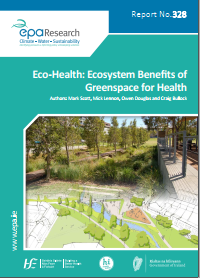
Authors: Mark Scott, Mick Lennon, Owen Douglas and Craig Bullock, July 2020
Year: 2020
This project advances the perspective that accessible and well-designed green spaces are essential infrastructure that is fundamental to the health and well-being of thriving and inclusive communities. There is a scientific consensus that green space provides multiple benefits for enhancing health and well-being, and these benefits provided by green space are increasingly recognised in policy at international, national and local levels.

In this research project, the contribution of residential solid fuel burning to ambient levels of wintertime PM2.5 was determined in the towns of Killarney, Enniscorthy and Birr. The results show that the burning of peat, coal and wood for home heating is by far the largest source of PM2.5 air pollution in these locations., June 2020
Year: 2020
In this research project, the contribution of residential solid fuel burning to ambient levels of wintertime PM2.5 was determined in the towns of Killarney, Enniscorthy and Birr. The results show that the burning of peat, coal and wood for home heating is by far the largest source of PM2.5 air pollution in these locations.
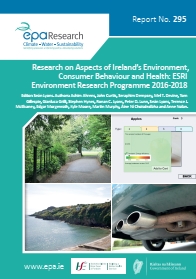
Authors: Achim Ahrens, John Curtis, Seraphim Dempsey, Mel T. Devine, Tom Gillespie, Gianluca Grilli, Stephen Hynes, Ronan C. Lyons, Peter D. Lunn, Seán Lyons, Terence J. McElvaney, Edgar Morgenroth, Kyle Moore, Martin Murphy, Áine Ní Choisdealbha and Anne Nolan. Editor: Seán Lyons, October 2019
Year: 2019
The Economic and Social Research Institute (ESRI) Environment Research Programme 2016-2018 brought together a diverse set of research topics in which the environment interacts with economic and social processes. Detailed in this report are findings from 7 projects which were undertaken as part of the wider Programme.
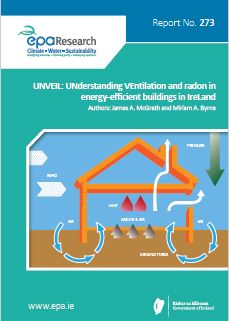
Authors: James A. McGrath and Miriam A. Byrne , April 2019
Year: 2019
In Ireland, radon gas is considered the greatest source of radiation exposure to the general population, accounting for just over 55% of the average radiation dose and is recognised as the second leading cause of lung cancer after tobacco smoke. Each year in Ireland, exposure to radon is linked to approximately 250 cases of lung cancer.
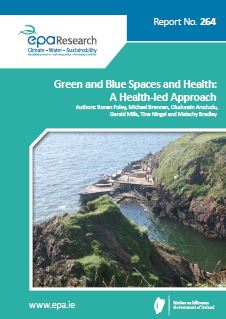
Authors: Ronan Foley, Michael Brennan, Oludunsin Arodudu, Gerald Mills, Tine Ningal and Malachy Bradley., November 2018
Year: 2018
This research was based on a 12-month desk study that modelled, for identified sample sites, the relationships between health indicators and the availability of green and blue infrastructure (GBI). It provided a route to identify measurable effects and results from a cross-sectional and area-based study.
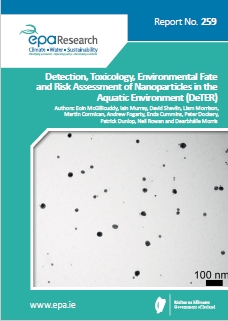
Authors: Eoin McGillicuddy, Iain Murray, David Shevlin, Liam Morrison, Martin Cormican, Andrew Fogarty, Enda Cummins, Peter Dockery, Patrick Dunlop, Neil Rowan and Dearbháile Morris, September 2018
Year: 2018
Nanotechnology is an emerging technology that has the potential to impact on all aspects of life and the economy and is expected to form the basis of several technological innovations and advances in the 21st century.
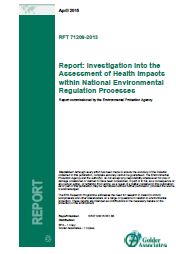
Report commissioned by the Environmental Protection Agency, March 2017
Year: 2017
In 2013, the EPA commissioned Golder Associates to undertake a study into how human health impacts are dealt with throughout the European Union (EU) by environmental regulators with an emphasis on the role of health impact assessment (HIA) at the planning / environment interface.
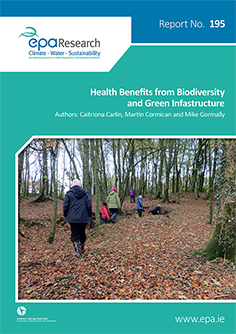
Authors: Caitriona Carlin, Martin Cormican and Mike Gormally, December 2016
Year: 2016
This project reviewed (1) evidence of wellbeing and health benefits from biodiversity, (2) views of health benefits from nature held by people who make decisions regarding green space and (3) practices to engage the public with the natural environment as a sustainable health strategy, to inform policymakers and practitioners of the health benefits from the natural environment and to recommend implementation strategies in Ireland
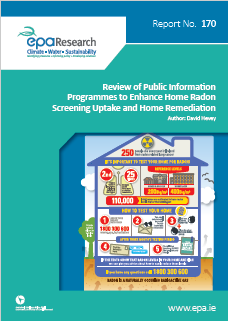
Author: David Hevey, April 2016
Year: 2016
Radon is a naturally occurring radioactive gas. It has no taste, colour or smell. It is formed in the ground by the radioactive decay of uranium which is present in all rocks and soils. The World Health Organisation has categorised radon as a carcinogen, in the same group as asbestos and tobacco smoke.
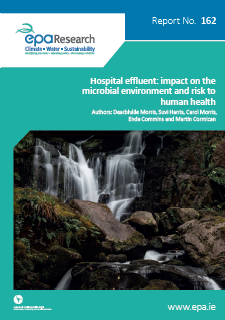
Authors: Dearbháile Morris, Suvi Harris, Carol Morris,Enda Commins and Martin Cormican, January 2016
Year: 2016
Antibiotic resistance is a major public health problem. In Ireland, and most of Europe, hospital effluent is released into the urban wastewater system without any specific measurement of antibiotic levels or antibiotic-resistant bacteria, and without any pre-treatment.
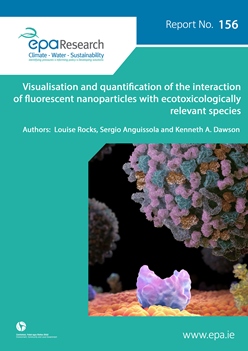
Year: 2015
This research aimed to clarify some aspects of the nature and consequences of the interaction between engineered nanoparticles and the environment.
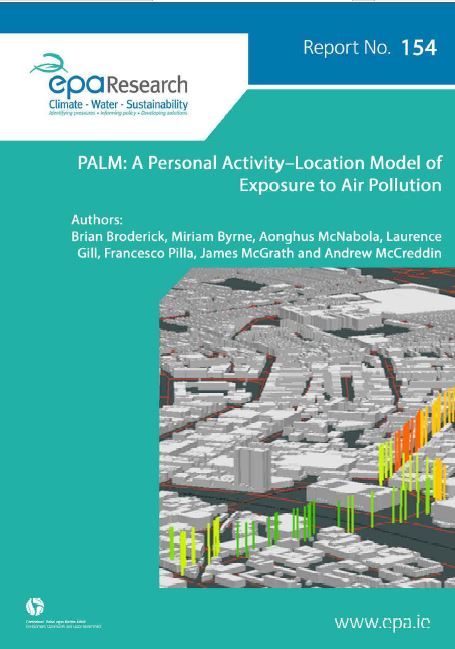
Year: 2015
The Personal Activity–Location Model (PALM) project investigated methods for modelling an individual’s personal exposure to air pollution taking into account variations in their activity and location.
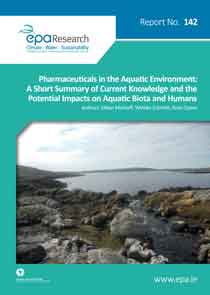
Year: 2015
This report aims to collate the knowledge base by documenting what is currently known and understood about pharmaceuticals in the aquatic environment and their potential impacts on aquatic biota and ultimately humans.